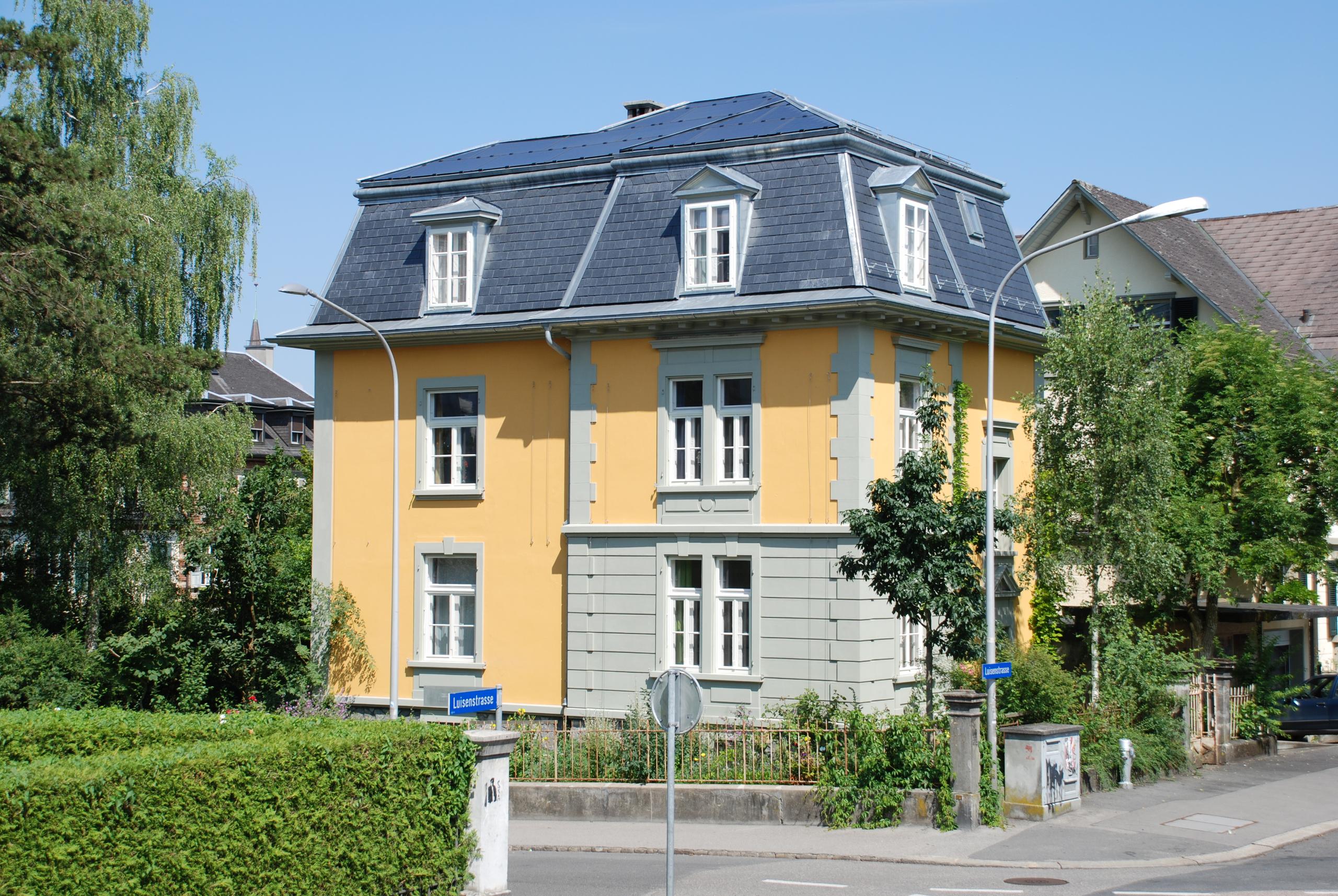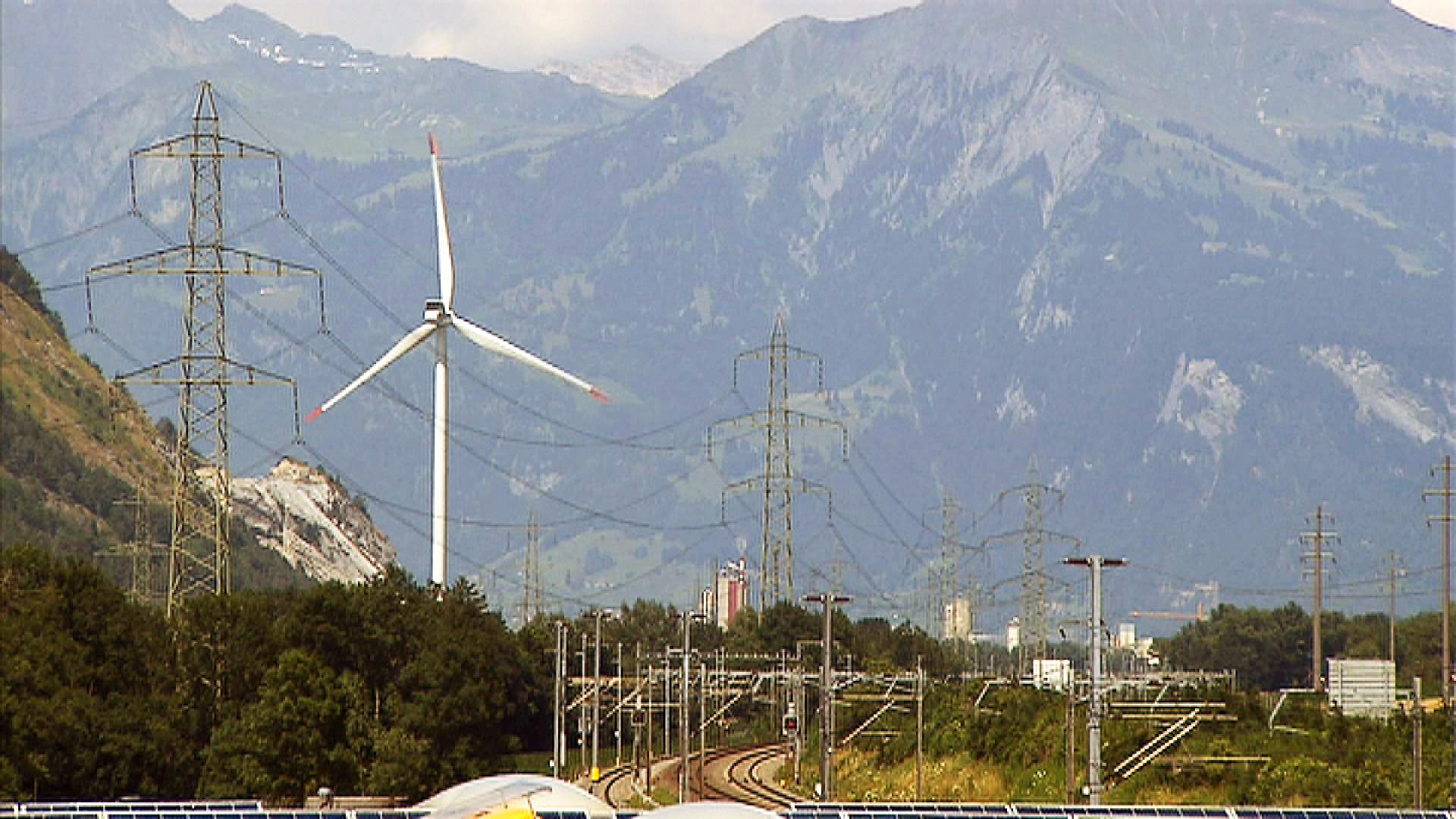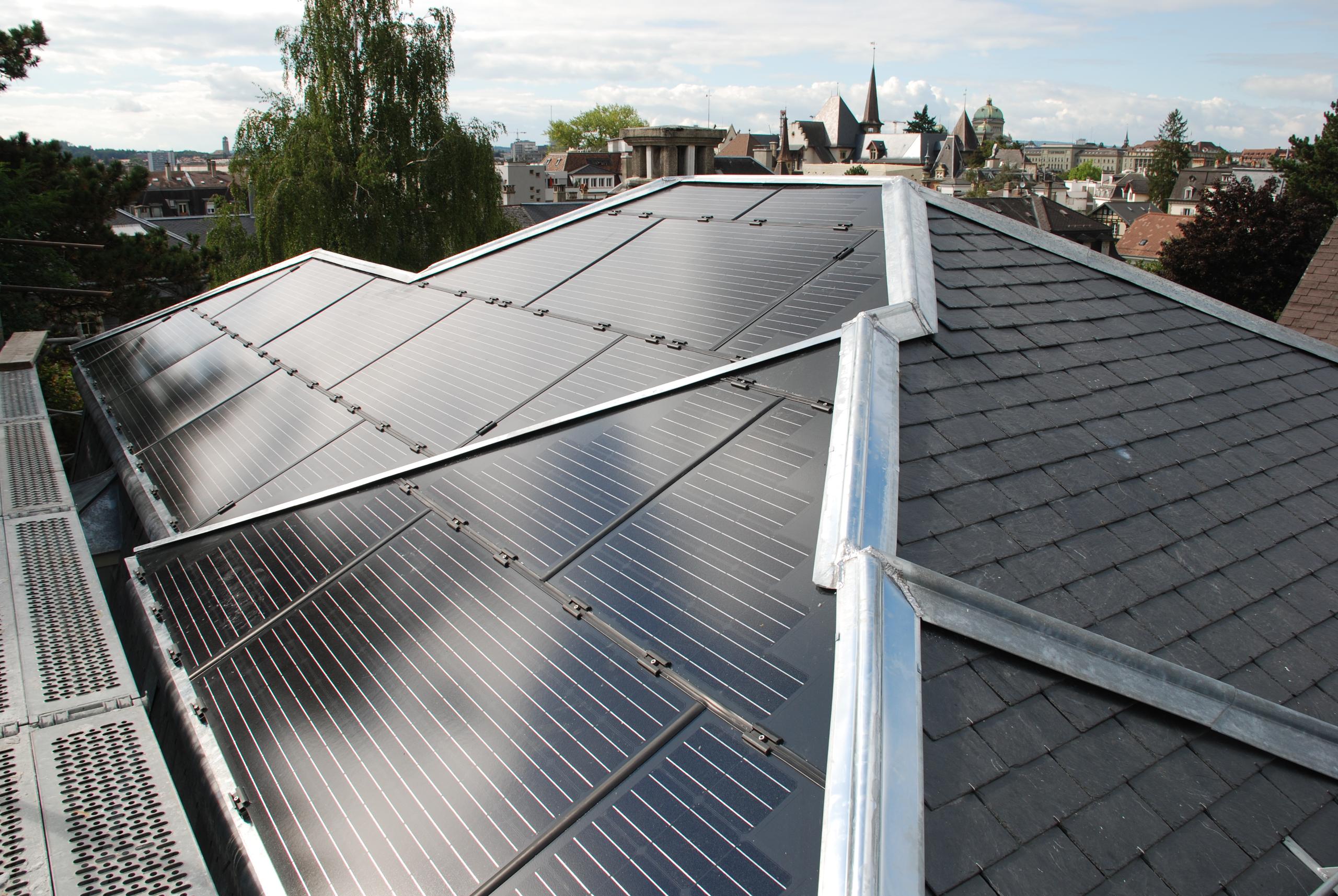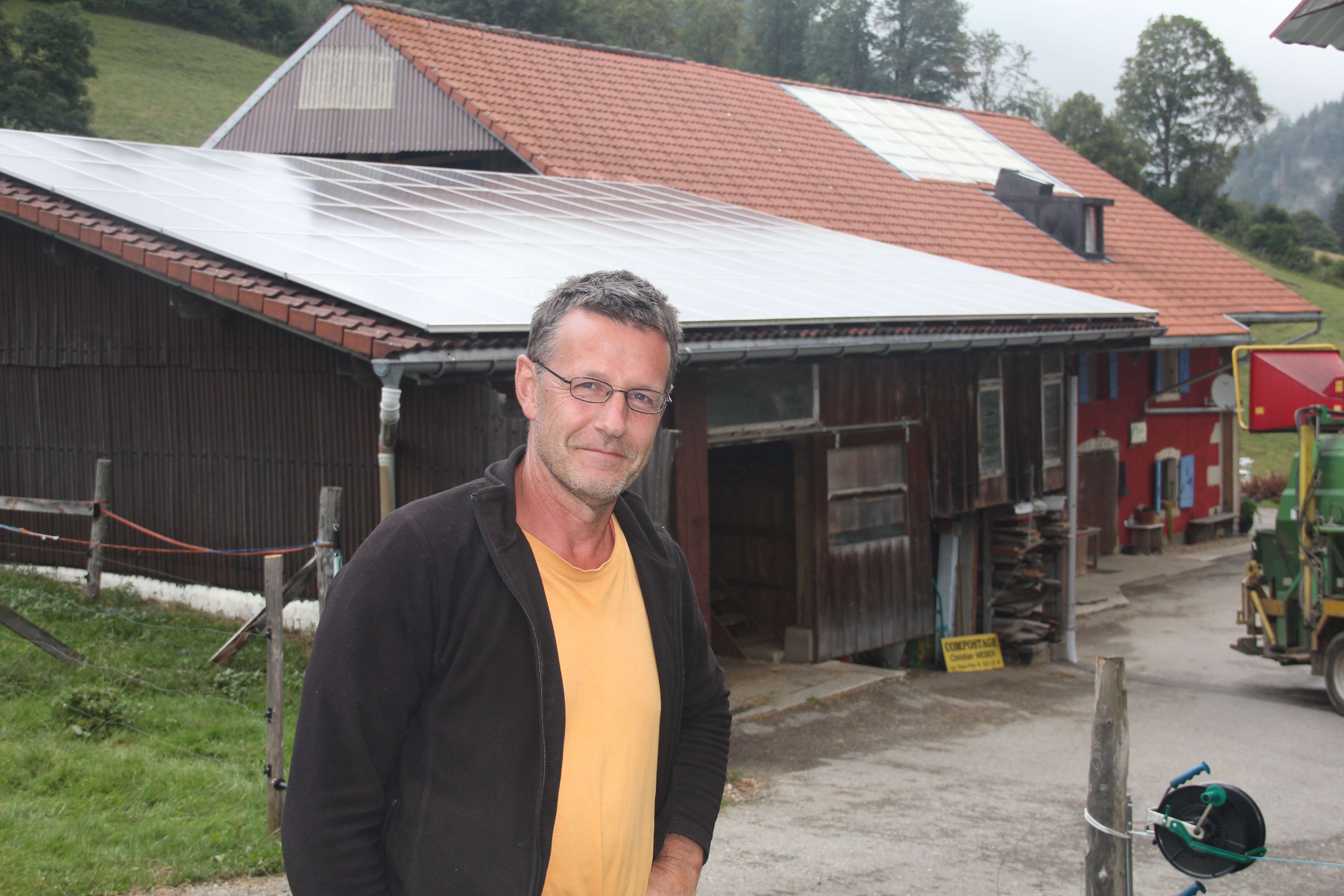Converting an old home into an energy showcase

It took two physicists and a sweeping change to Swiss energy policy for a historic home to be turned into a showcase ultra-low-energy building. Is this an example that can be replicated?
Two of the main pillars of Switzerland’s complex strategyExternal link aimed at transforming the country’s energy system by 2050 are lower electricity consumption and replacing nuclear power with renewable sources of energy. That, at least, is the theory.
In practice, power and construction companies are set to struggle with the implementation of the government’s ambitious plans to expand alternative sources of energy. Solar installations are difficult to reconcile with building regulations, spatial planning, urban heritage conservation and budgets. And wind power is not much of an option in this densely populated country.

More
Can wind energy overcome planning hurdles?
For individual families the task is even more challenging, particularly if we are not looking at a greenfield development, but the restoration of a historic house in an urban area. Enter Regine Röthlisberger and Manuel Hutterli: The only people in 2014 to win a solar energy award for making their old building more energy-efficient.
The climate researchers received both the seal of approval from the MinergieExternal link association for creating a particularly energy-efficient building and an award from the Swiss Solar AgencyExternal link for the energy revamping of their 116-year-old listed home, which today emits 10.6 tons less carbon dioxide every year.
“The project shows what energy and emission reductions are possible even in heritage-protected objects,” the Solar Agency explained its decision. The statement should, however, not belie the fact that the two hands-on physicists met with a lot of opposition at the start.
“When we first contacted the cultural heritage office about our plans for a solar power installation on our roof it was categorically ruled out for aesthetic reasons,” Hutterli explained. “We insisted and agreed to develop special slate collectors that could be disguised within the pitched roof so they are invisible from the street.”
In March 2011 their project received an unexpected impetus. The disaster in Fukushima brought nuclear energy into disrepute once again, and the Swiss cabinet took its historic decision to phase out atomic power and promote renewable sources. This meant that the cultural heritage office would have to soften its stance and support homeowners’ efforts to install solar panels.
Fukushima effect
“After Fukushima the heritage protector said he could no longer prohibit the installation. So we were able to proceed as originally planned and were even allowed to install our photovoltaic thermal hybrid solar collectors on the flatter part of our roof,” Hutterli said.

Bern’s Office for the Preservation of Historical Monuments lists the neo-baroque detached house, built in 1898 in an upmarket residential area of Bern, as a building requiring the highest level of protection. This means the owners have to coordinate and agree on every restoration step beforehand.
In the case of the Hutterli family, the heritage office relented because their solar installation is a reversible solution that is aesthetically integrated and does not destroy any historical substance.
The owners thermally overhauled their house. They installed innovative systems. And they insulated the shell from the cellar to the attic with environmentally-friendly cellulose insulation wherever possible, filling all the wall cavities with recyclable polystyrene pearls and krypton-filled double-glazed windows – not an easy task if you have to preserve the look and feel of the century-old windows and doors.
Innovation was key, according to Hutterli. “We had to find individual solutions. Components had to be assembled in a sophisticated manner to suit our needs, while the result would have to fulfil the heritage protection’s highest aesthetic requirements.”
Breaking new ground
During the renovation, opposition not only came from the authorities but also from some craftspeople who were reluctant to break new ground. They argued that they had no experience in the use of such novel products and technology and could not offer any warranty. Some bailed, but most stayed on, fascinated and very committed to the project.
They drilled 150 metres into the ground for two geothermal probes. In the basement they installed a solar storage tank and a heat pump for heating and hot water, and on the roof photovoltaics for electricity and a solar thermal system for hot water. The special receptors do not require direct sun exposure and can absorb thermal energy at temperatures as low as 10˚ celsius.
The owners’ physics background, knowhow and training helped during the project – and are still required today for emergency reparations. Röthlisberger is a specialist for greenhouse gases and climate reporting at the Federal Office of the Environment, while Hutterli develops time-of-flight mass spectrometers used to measure trace gases and particles in the atmosphere.
Röthlisberger and Hutterli not only understand the impact of carbon dioxide emissions and different types of energy, they were also prepared to sacrifice money, time and effort to contribute to the reduction of their own ecological footprint.
Sacrifices and returns
Hutterli helped develop and install the slate collectors as well as controls and sensors used for monitoring because no finished products were available on the market. The project required his personal input but also sacrifices from the family.
“We decided to live on a construction site for three years so we would be able to develop and adjust the pilot and the permanent installations on site,” Hutterli said. “This allowed us to achieve an energetically optimal renovation.”
As a result, the four-person family today consumes four times less energy and their energy intake is only 17% of that before the restoration. The photovoltaics generate 3,200 kWh electricity and the solar system 10,000 kWh thermal energy.
For Thomas Ammann, responsible for energy technology and structural engineering at the Swiss Home Owners’ AssociationExternal link, however, such examples are rare and will be hard to replicate.
“Smaller investments into insulating the attic or the cellar are examples of measures homeowners may take which are effective and pay off quickly,” Ammann said. But such a complete renovation was only really possible because the owners had a combination of “resourcefulness and financial means”.
But times are slowly changing. Ammann explained that housing technology is playing an ever-greater role, and that there has also been a shift in the thinking of the heritage protection office. “Today, they are more open to something like photovoltaics,” Ammann said. “This would have been inconceivable only a few years ago.”
Energy Strategy 2050
About 60% of Switzerland’s electricity comes from hydropower, 40% from nuclear power. Solar, wind, biogas, biomass and waste currently make up 3%. The government’s ambitious planExternal link is to expand alternative energies by a factor of ten. Solar energy is expected to cover a quarter of our electricity and a fifth of our heat demand by 2050.
For building owners the problems are costly investments, output fluctuations, a lack of storage solutions, the fact that solar and wind power need space and that they change the urban and rural landscape. The preservation of old structures is key in a country where the buildings in the heart of the cities can go back to the 12th century, and many homes in residential areas are listed.
The challenge is complicated by the country’s topography and size. Two-thirds of the population live on the Swiss plateau covering 30% of Switzerland’s surface area. With a density of 450 people per square kilometre the plateau is one of the densest areas in Europe.

In compliance with the JTI standards
More: SWI swissinfo.ch certified by the Journalism Trust Initiative


You can find an overview of ongoing debates with our journalists here. Please join us!
If you want to start a conversation about a topic raised in this article or want to report factual errors, email us at english@swissinfo.ch.